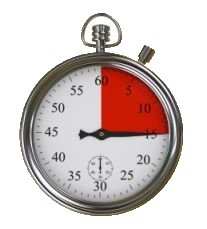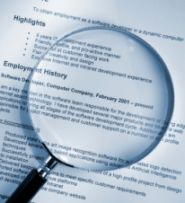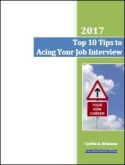 |
||
Job Resume: The Chronological FormatThe way you structure your job resume makes a difference. Hiring managers generally prefer to see a reverse chronological presentation of your background. In this format, you will start with your present position and work back to your early career. This allows an employer to see quickly and clearly where you've worked, what positions you've held, a sense of your tenure in each role, promotional track record, your academic background, etc. They do not need to hunt for any of this information. It's a standard format. 
Your resume can receive the 15-20 seconds experienced hiring managers will give it, and they will know whether your background is of any interest. You read that correctly...15-20 seconds. That's all you really get! And that's
assuming that a human being looks at your job resume.
If your resume goes blindly into a company's ATS (Applicant Tracking System), you won't even get that. With an ATS system, your key words will need to stand out. Find out more about Resume Keywords and why they're important. Your chronological resume is going to have the following sections:
We're going to take an in depth look at each of these areas. Contact InformationContact information should include the following elements:
Make sure that your name and phone number appear on the second page of your job resume. Pages can get separated on a busy hiring manager's desk, so you want to be sure that they can reunite Page 1 and Page 2 should they become separated. Summary StatementI strongly encourage you to visit our Summary Statement section to find out more about why we're recommending a Summary over an objective, but I'll give you a brief outline of what you need to know here. Your summary statement opens your job resume. It's a short narrative (3-5 sentences) that describes your primary experience and key skill set. It is a better choice than incorporating an objective into your resume. Objectives can be very limiting, and can inadvertently knock you out of consideration, especially with companies that use ATS (Applicant Tracking Systems) or lower level screeners. A mismatch between your objective and the open job will likely eliminate your chances of getting called for an interview. It's also a good idea to try to include some of the key words you found in the job ad in your Summary Statement. Professional ExperienceWhen presenting your professional experience on your job resume, the following elements need to be included:
Accomplishments are so important to get right that we'll take a closer look at this topic separately. See Creating a Resume for more information. In the meantime, let's review the other elements of presenting your professional background. Employer InformationUnless you work for IBM or GE, people might not be familiar with your company or division. And, if you're working for a large, but relatively unknown company, you can be screened out, even though the "demographics" might have been in line with the spec. Give the reader a sense of your organization on your job resume - revenue size, location, employee size. Here's an example:
ABC Widget Corporation, Philadelphia, PA 2000-Present
ABC Widget is a $2 billion manufacturer of industrial gears for the automotive and semiconductor industry. With 23,000 employees worldwide, ABC is a world leader in industrial components. Dates of EmploymentIf you have only had one position with a company, present dates as shown above for ABC Widget - on the same line as company name. If you have had multiple positions within one company, use inclusive dates to reflect your total experience with the company on that first company line. If you've had multiple positions, include dates on these subsections that reflect time in each position. In general, express dates in full years, rather than month/year. This will camouflage any gaps in employment. You are not going to mislead anyone regarding gaps in employment, but remember - the job resume is used to screen you out, not in. You can address any gaps in your record if asked during the interview. Positions HeldYou will want to list all positions you held with an organization on your job resume. Give your title, the applicable dates, and a brief description of your role. Include metrics in your description where possible. For example, if you led a team of people, state how many people were managed. If you had P & L responsibility, include the size of your budget. You get the idea.  This description should be only long enough to give the reader a sense of the scope of your responsibilities. No longer than a few well crafted sentences. This description will be followed by some of your key accomplishments that are representative of your experience in that particular role. You'll want to include more accomplishments for more recent positions, and fewer accomplishments from your early career. Include items that will highlight the scope of your responsibility and key results achieved. If you've got considerable experience, consider summarizing your early experience under a heading, or just listing employers, positions and dates. This will make it easier to keep your job resume to two pages. Something like this:
Early Career
XYZ Inc., Evansville, IL - Account Management roles 1980-1985 IBM Corporation, Chicago, IL - Sales Management rotation 1975-1980 Academic Credentials & Professional EducationDegree ProgramsYour academic credentials should be presented in reverse chronological order on your job resume, beginning with the highest degree you obtained. Information to be included for each degree includes:
Do not include the following:
Do not, under any circumstances, misrepresent
your educational background on your job resume. If you did not receive a degree, it's permissible to record your dates of attendance. But never suggest that you received a degree if you didn't. For example: University of Pennsylvania, Philadelphia, PA
Wharton School of Business 1988-1992 Notice that there is no mention of a degree program. Your interviewer should ask you about this. Don't lie. If you didn't finish your degree program, you'll need to address it in the interview. From a resume perspective, include whatever educational credentials you have. In a quick review of your resume, the presentation above increases your odds of getting past the screener. Studies show that misrepresentation of academic credentials is the number one source of job resume fraud. Chances are, you will be caught. Sometimes, you will be caught after you have resigned from your current employer and have started your new job. If you lie about having a degree, your application has been falsified and that is grounds for dismissal. You'll have no recourse. You'll be unemployed - and will likely be denied unemployment compensation. Not a pretty picture. Take my advice...play it straight. Professional EducationIf you have attended educational seminars, sales training programs, etc. list them in this section. Only include programs that are of some substance, relevant and reasonably current. For example, attending a two hour seminar on closing techniques would not qualify; attending a Sandler Sales Institute training program should be listed. If you've taken a series of sales training courses early in your career, list these as one line item, rather than providing a laundry list of 20 different programs. Use your judgment. Think about how a hiring manager would view these programs. If they don't add something of value to your presentation, leave them off your resume. Professional Recognition & OrganizationsRecognitionIf you've received honors and awards that did not make it into your significant accomplishments above, you should list them at the end of your resume. Include significant speaking engagements as well as any industry recognition you've received. Professional OrganizationsList any professional organizations you belong to that are relevant to your field and the type of position you're seeking. Note leadership positions where appropriate. If you were a member in the past, but are no longer a current member of a particular organization, don't include it on your list. No one will care that you were a member of the Direct Marketing Association in 1985. These organizations should be current. And, if you are not a member of a professional association, think about joining one or two that are relevant for your discipline. Not only does it suggest a desire to stay current with your field, these organizations are powerful networking vehicles for you in your job search. Think about stepping up into a leadership role. Volunteer for a committee. It's the best way to gain visibility within the organization and to get to know people who are likely well connected in the group. Not only will these contacts help in your job search, they will be helpful to you after you land in a new position. Want to see how this all comes together?
View our sample chronological resume to see the finished product. |
|
|
|
[?] SUBSCRIBE
|
||
About Us | Contact Us |
Privacy Policy |
||





